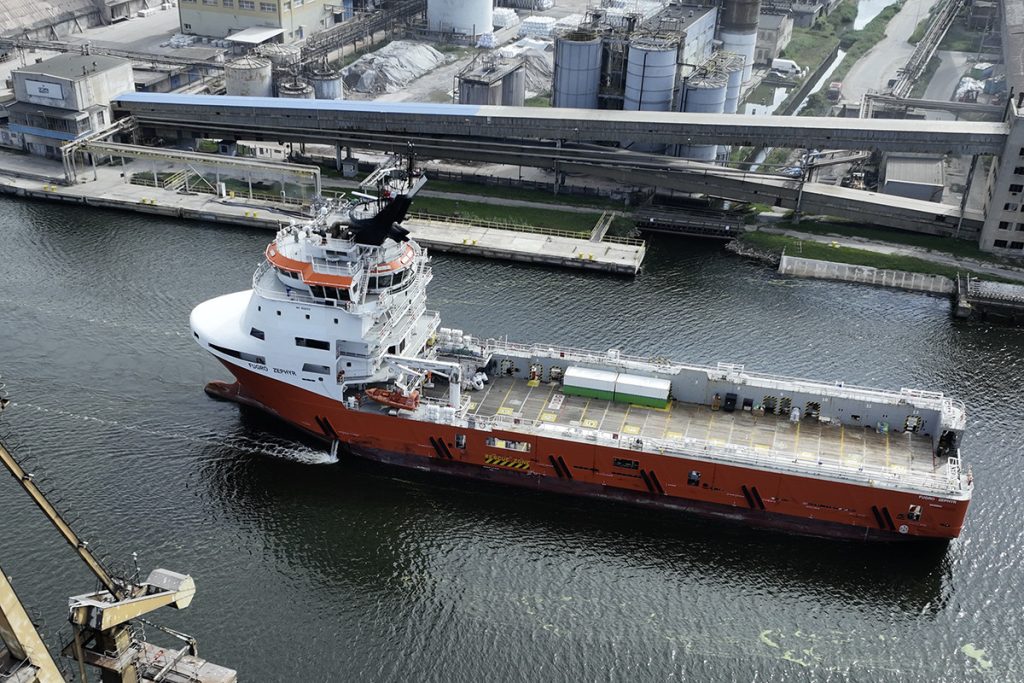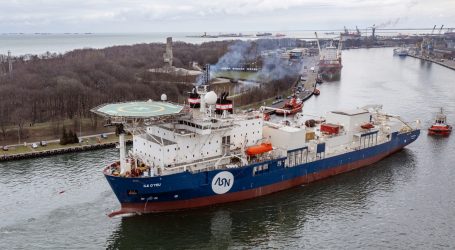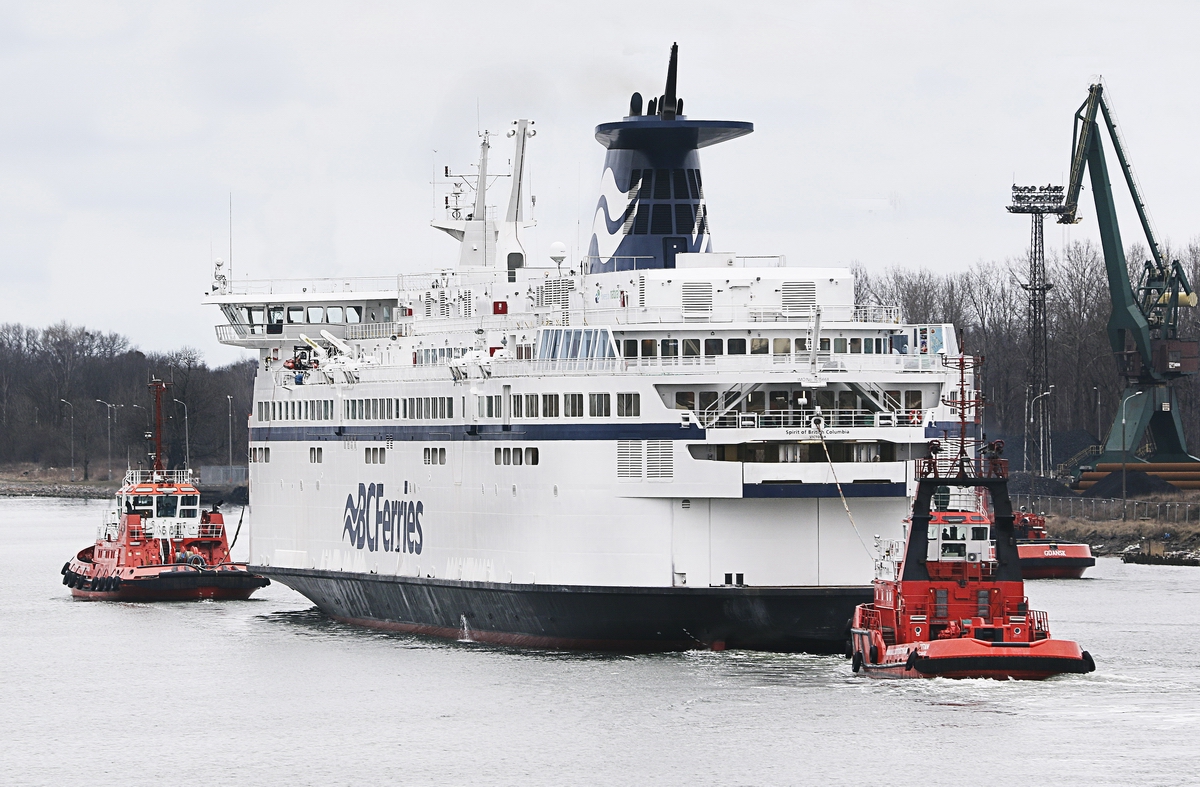Remontowa has converted another offshore supply vessel into a drilling ship

Before arriving at the J. Piłsudski Remontowa Shipyard in Gdańsk for conversion, the Fugro Zephyr was a standard PSV (Platform Supply Vessel), of which there are many on the market. These vessels provide services to the oil industry, including the transport of goods, materials, equipment and personnel to drilling platforms.
The Polish shipyard has specialised for years in the conversion of offshore vessels, adapting them to perform new functions that are in demand on the market. In the last three years, it has converted vessels such as Cable Vigilance, Ile de Molene and Boka Ocean into cable ships. Fugro Zephyr, in turn, was converted into a geotechnical drilling vessel for the construction of offshore wind farms.
The transformation from a PSV vessel to a geotechnical vessel meant a fundamental change in the way the vessel operates and its basic function, and thus radical changes in the deck equipment, workspace and virtually all ship systems.
A new deck, known as a mezzanine deck, was installed on the vessel, on which, among other things, a nearly 40-metre drilling rig was placed. In the middle of the ship’s side, a wheelhouse, known as a doghouse, was built, i.e. a room with an area of several square metres intended for engineers responsible for controlling the drilling rig and all equipment used for drilling.
In addition, a number of rooms were built and installed between the existing main deck and the prefabricated deck installed by the shipyard, including: a laboratory; a storage room for geological samples, which are initially examined in the laboratory; auxiliary rooms, such as an incinerator; a hydraulic unit room; a main compressor room; an air cylinder room; workshop rooms; a new companionway to the main deck, enabling quick communication between decks without going through the superstructure.
The installation of the hydraulic unit (the new equipment is hydraulically driven) was a particularly big challenge, as it had to be installed on the old deck and then encased with a new deck and side walls, which required careful protection during the steelwork to avoid damage.
Liquid mud tanks were also constructed. They are part of a large system used to produce, store and purify mud, which is essential for the drilling process. These tanks were converted from one of the existing silos, in which the ship transported bulk cargo to platforms before the conversion. The second of these silos was converted into a two-storey pumping station, in which pumps and other equipment for this system were installed.
The next stage of the conversion was to connect all the new equipment, tanks and rooms to the installation or to move or remove existing systems that blocked the implementation of the designed changes.
A moonpool was also built, i.e. an open space from the top deck to the bottom of the ship. Although the ship was already preliminarily prepared for this, in terms of the strength of the hull structure, it had to be fully completed in order to be adapted to the tasks to be performed after the conversion – to ‘open’ the decks and bottom of the vessel and to install additional profiles, walls and a moonpool cover. It is worth noting that it is through the moonpool that the drill and its guiding equipment descend to the seabed.
In addition, a compressor room was built to support drilling operations and control multiple valves.
The shipbuilders also modernised the ship’s power network by adding new transformers, which required the reconstruction of switchgear and the installation of additional electrical systems to connect the new equipment. They also installed an additional refrigerated container (after the conversion, in addition to the crew, a large group of scientists conducting research will be staying on the ship, so the existing cold store was too small).
The work also included a complete renovation of the kitchen and mess hall – above all, these rooms gained a new quality, decor and equipment. The deck offices where the scientists will work have also been rearranged, new telephone lines have been installed in the newly built rooms, new loudspeakers, alarms, fire detectors and new deck monitoring systems have been installed – all this also involved the expansion of the systems on the bridge, etc.
The assembly of the drilling tower was an interesting operation. It was delivered in seven parts – three elements formed each of the columns, and the seventh part was the upper crossbar connecting both columns. Each column was assembled on a slipway and then transported to the ship. Finally, the crossbar was tightened. The assembled elements were transported using the REM 220 floating shipyard crane.
The tower is used to lift and lower certain elements and to manoeuvre pipes that are lowered through the moonpool to the seabed, acting as an extension of the drill located at the bottom. Each of these pipes can be up to 6 m long, so the drilling rig must be of sufficient height to allow the pipes to be placed vertically. This is, of course, done by specialised machines, controlled from the rig’s control room. The pipes are connected, which allows drilling to a depth of several hundred metres.
During drilling, the ship is precisely maintained in position by a DP (dynamic positioning) system. For typical offshore drilling, the ship must maintain its position with an accuracy of 1.5 – 2 m. During the conversion, one of the reference systems was added to determine the position for DP purposes.
Fugro Zephyr (formerly Sea Goldcrest) was built in 2019 at the Mawei Shipbuilding Limited shipyard in China. It is 88.80 m long and 20 m wide.
The shipowner, Fugro, is a global company that has been actively expanding its fleet of geotechnical vessels in recent years in response to the growing demand for offshore research. The main driver of this expansion is the dynamic development of offshore wind energy, which requires extensive geotechnical research to ensure the safe and stable installation of wind turbines and related infrastructure.
Fugro has recently won several contracts for geotechnical surveys for large offshore wind farm projects, such as Dogger Bank South and Blue Mackerel, demonstrating the demand for its services and the likely use of vessels such as the Fugro Zephyr in these projects.
Fugro’s strategic investment in the expansion of its geotechnical fleet positions the company as a key player in the global energy transition towards renewable energy sources. The Fugro Zephyr, as a recently converted vessel, is a significant asset in this strategy, enabling the company to capitalise on the growing demand for detailed seabed characterisation for the development of offshore wind farms.
In the near future, Fugro Zephyr will be performing its tasks in the northern part of the Netherlands’ coastal waters, where it will be surveying the seabed for the construction of wind towers.
Photos: Maciej Bielesz/PortalMorski.pl


